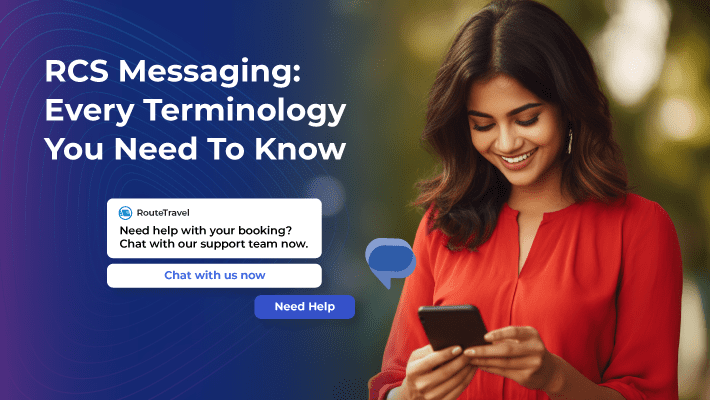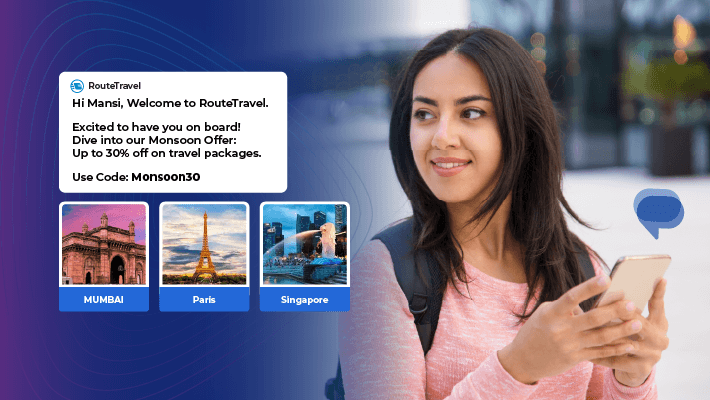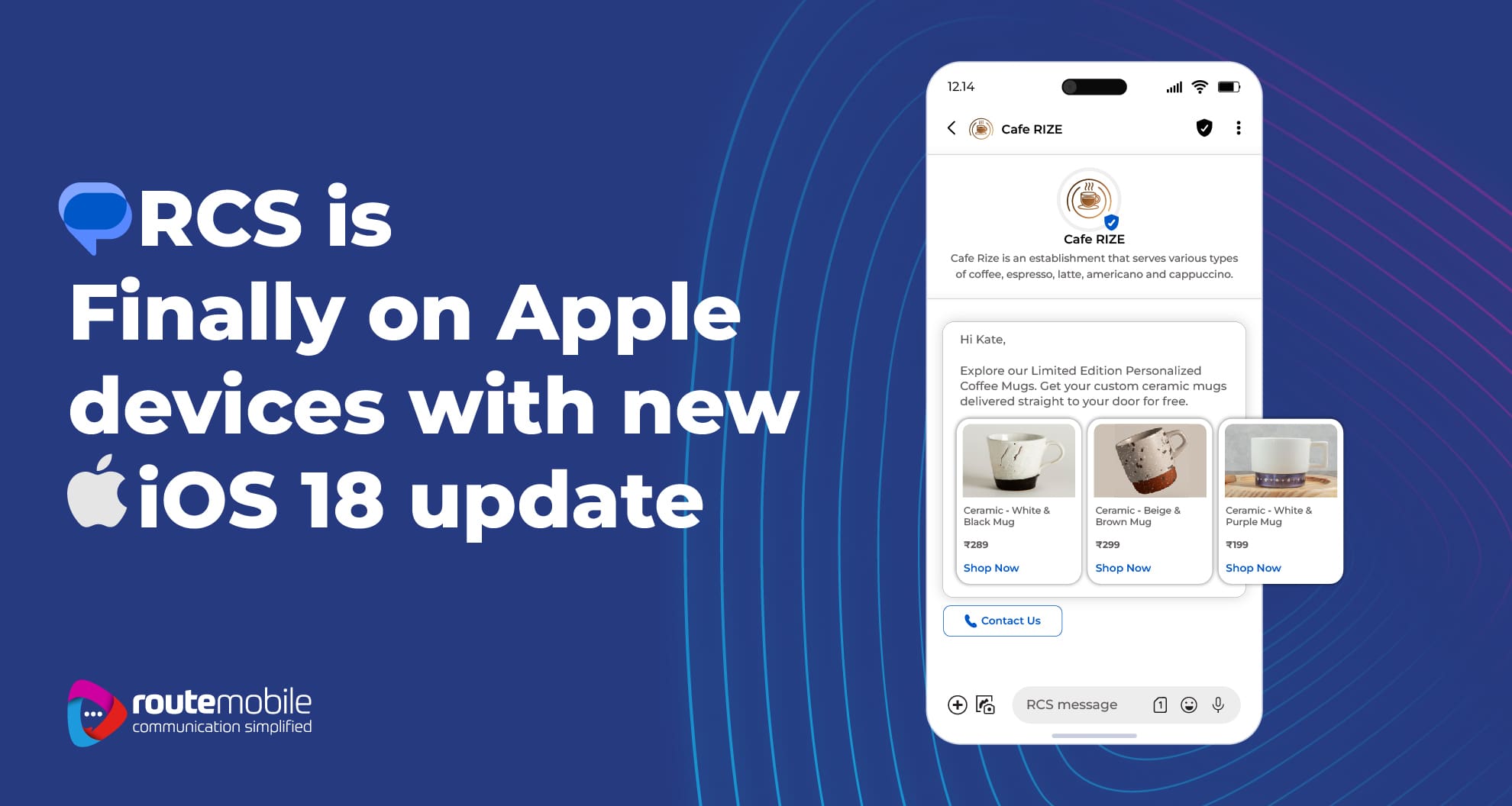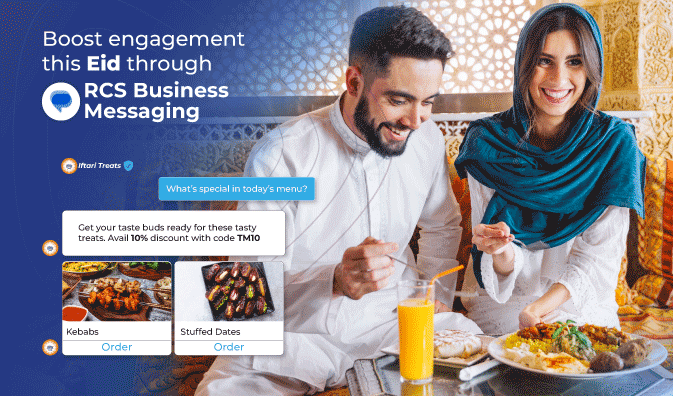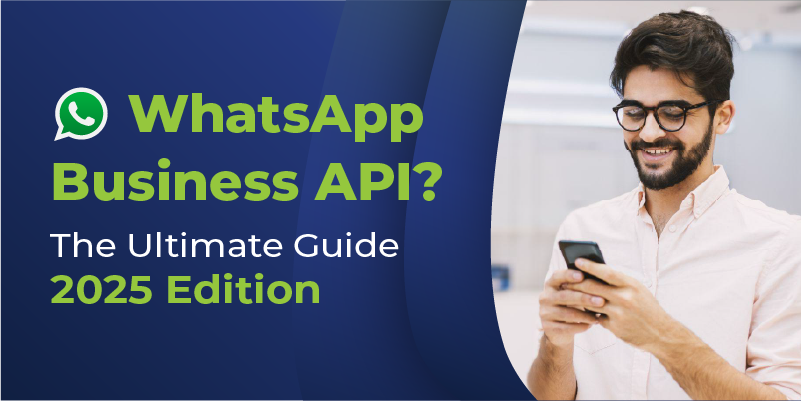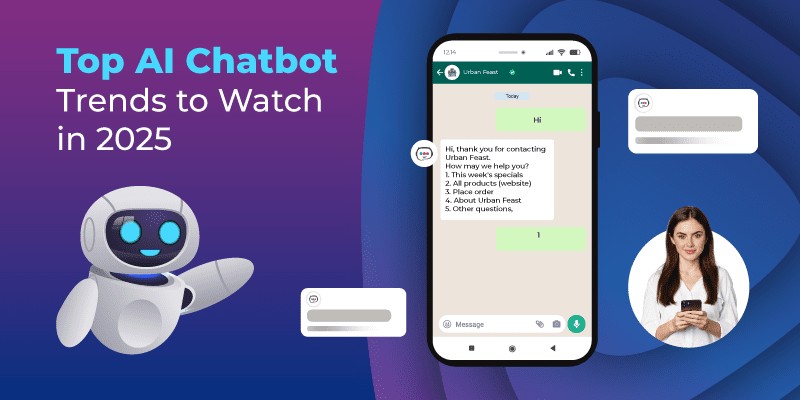Key Highlights
- Existing situation and need for higher engagement
- The need for chatbots
- how is RCS chatbot different?
- Tips to implemet interactive RCS chatbot
- Impact of RCS chatbot on engagement
Recently there has been a lot of buzz created around chatbots, stating they will replace apps, and even cut costs and give a good ROI, but it is not possible to achieve all these results without generating high engagement.
According to reputed research, 51% of people expected business to be available to them 24hrs a day, 7days a week and 365 days a year. In such a scenario, Enterprises are looking out for a simple yet interactive way of connecting directly with customers on their devices with minimum resources.
RCS Business Messaging Chatbots are the answer to these. They are the present and future of customer engagement; provided they are well-designed and meet the needs and expectations of the customers.
RCS Business Messaging is a step ahead, as chatbot developers can integrate conversational commerce and improve consumer engagement. The demand for this content richness is steering some enterprises to adopt RCS Business Messaging. The end-users need not download multiple apps, but can communicate with enterprises from the default messaging app itself.
Here are some best practices to create interactive RCS Chatbot:
1. Define Conversation Flows:
While designing a chatbot, it is important to visualise the conversation flow. It is important to map all the paths of conversation to avoid a scenario where the user reaches a dead end, especially if a solution is not provided. It is important to indicate different milestones in the conversation, for example, using different colours or shapes to illustrate that a user has reached the end of a chatbot conversation path or that a human agent will assist in the conversation from that particular point. Once the conversation flow is decided, one can judge whether or not users are going through too many conversational steps before reaching the highlighted milestones. RCS features such as carousel, suggested reply, suggested action, images, videos, QR code, branding, verified sender ID enhance the engagement and make conversation flows highly interactive.
2. Decide on the features:
For instance, a fast food outlet’s customers can select & order their favourite subs, burgers, drinks using carousels, tap of a button to select their order displayed via rich media from their nearest location using suggested actions and replies etc. Take another instance of a car service, customers can book a car service, receive maintenance reminders, service coupons, loaner vehicle options and directions to the service centre which require features, such as suggested actions and replies, calendar invite etc. Incase of travel booking via an agent, one can easily view, share destinations or carrier details via rich media/ carousel. Add upcoming reservations to their calendar as well as receive prompts to download the app with QR code, suggested actions and replies, verified sending, branding etc.
3. Visualise the communication:
It is important to personify you brand to decide the tone of the messages you will be sending or receiving, emojis and GIFs to be used. Incorporating the essence of communication in your brand voice using features like branded content, verified Sender ID, rich media to initiate conversations keeps the chatbot consistent with the messaging of your other marketing channels. It helps to builds trust and establishes the authenticity of a brand in the eyes of the customer.
4. Plan for Suggested Actions & Suggested Replies:
Suggested actions and suggested replies appear as clickable buttons at the bottom of messages are new features that come built into the RCS chatbot. These clickable buttons come built with RCS, which help the user to interact with the brand which helps in creating higher engagement with the customer.
5. SMS fallback option:
SMS fallback option can be included with RCS chatbots that deliver content regardless of Internet access.
6. Seamless handoff to customer service:
Always have an option to connect the customer with a human when the conversation or query is outside the scope of a chatbot by implementing a call to action chip, such as Call Customer Support” or “Contact us” to easily get in touch with a customer care support representative.
7. Target Audience, Reach & Region:
Users often assume a chatbot can help them with any request. Although that may be the functionality of most chatbots, one can set expectations at the start for users by mentioning what the bot is designed to do, such as help finding tickets in the selected region or for searching nearby ATMs within 10 km. Once the users understand what the bot does, they are most likely to return. For example, when a Sprint Telco customer lands in a new country, they get a rich message showing rates and roaming plans. The customers can browse through the plans and choose one.
RCS is all set to grow revenue for Enterprises by offering new capabilities and shares in the revenue generated by new business paradigms such as chatbots and in-chat search. Enterprises and brands are ready to allocate and invest their digital marketing budget towards RCS Business Messaging to communicate and engage with customers as it creates an enhanced digital platform to reach their customers where they already are—in their messaging app.
In addition to improved branding, RCS supports sending messages from verified business accounts instead a sender id unlike that of an SMS. The official brand logo is shown alongside the brand name which reassures end users that the conversation is legitimate.
The RCS branding and verification builds familiarity and trust with end users while brands protect their identity and reputation. Features such as suggested actions, suggested replies, true metrics and SMS fall back as an option encourage the end users to interact more with the brand than before. It enhances customer experience by creating personalised offers and journeys for their customers, thereby increasing conversion rate by increasing engagement.
According to a reputed research firm, 1.8 billion unique, active chatbot or virtual assistant users will be active by 2021 with a market worth more than $600 billion in revenues by 2020. As chatbots grow in popularity, it is mandatory that brands build their chatbot conversations around strong design principles and meet customer expectations in terms of solving their queries or complaints with minimum chats.


